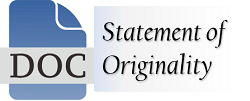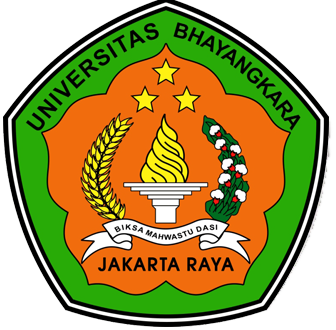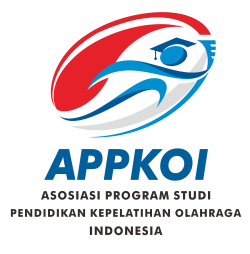Physical Fitness: Ps Sipangko Football Club Kabupaten Tapanuli Selatan
DOI:
https://doi.org/10.31599/d87mrx17Keywords:
Football, Physical Fitness, Club, PlayerAbstract
Physical health and physical fitness have an important role in the world of sport, especially in the context of football clubs. The PS Sipangko football club in South Tapanuli Regency, which has a long history in the world of football, has unique challenges and opportunities in maintaining the physical health of its players. This study aims to measure and analyze the level of physical fitness of the 13 players of the PS Sipangko football club, South Tapanuli Regency and identify the factors that influence this level of fitness. The research method used was a survey and physical measurements involving club players. The data was analyzed statistically to evaluate the level of physical fitness and its relationship to performance on the field. The results showed that the level of physical fitness of players with an average physical fitness test score was 10.80 in the 14-17 interval with a percentage of 38.46%. Judging from the freshness level norms, the category is classified as Medium. These findings provide a deeper understanding of the importance of maintaining physical health in the world of football and highlight the need to pay attention to aspects of physical fitness in the development of football players.
Downloads
References
Afandy, T., Andiana, O., & Kinanti, R. G. (2015). Survei Tingkat Kebugaran Jasmani Pemain Sepak Bola Usia 13-15 Tahun di Arema Academy Kota Malang. Jurnal Sport Science, 6(2), 99-105.
Alghafary, N. A., Alrahamneh, A. A., Al Maharmeh, Y. A. M., Qablan, S. A., & Jamous, I. M. B. A. (2022). Building Standard Levels to Assess the Level of Some Elements of Fitness Related to Health among Junior Footballers. Journal of Educational and Social Research, 12(2), 267–285. https://doi.org/10.36941/jesr-2022-0050
Amin, N., & Lestari, Y. N. A. (2019). Hubungan Status Gizi, Tingkat Kecukupan Energi dan Zat Gizi dengan Kecepatan pada Atlet Hockey Kota Surabaya. Sport and Nutrition Journal, 1(1), 19–26.
Aprilia, N., & Januarto, O. B. (2022). Hubungan Kebugaran Jasmani dengan Prestasi Belajar Siswa SMP: Literature Review. Sport Science and Health, 4(6), 495–507. https://doi.org/10.17977/um062v4i62022p495-507
Arief, M. G., Kurniawan, A. W., & Kurniawan, R. (2021). Pengembangan Pembelajaran Kebugaran Jasmani Unsur Kelincahan Berbasis Multimedia Interaktif. Sport Science and Health, 3(2), 40–53. https://doi.org/10.17977/um062v3i22021p40-53
Caçador, C., Teixeira-Lemos, E., Martins, S. O., & Ramos, F. (2021). The Role of Nutritional Status on Polypharmacy, Cognition, and Functional Capacity of Institutionalized Elderly: A Systematic Review. Nutrients, 13(10). https://doi.org/10.3390/nu13103477.
Caçador, C., Teixeira-Lemos, E., Oliveira, J., Pinheiro, J., Mascarenhas-Melo, F., & Ramos, F. (2021). The Relationship between Nutritional Status and Functional Capacity: A Contribution Study in Institutionalised Portuguese Older Adults. International Journal of Environmental Research and Public Health, 18(7). https://doi.org/10.3390/ijerph18073789
Castagna, C., Manzi, V., Impellizzeri, F., Weston, M., & Carlos, J. (2010). Relationship Between Endurance Field-Tests and Match Performance in. 1–24. https://doi.org/https://doi.org/10.1519/jsc.0b013e3181e72709
Cornia, I., & Adriani, M. (2018). Hubungan Antara Asupan Zat Gizi Makro dan Status Gizi dengan Kebugaran Jasmani Mahasiswa UKM Taekwondo Relationship between Macronutrient Intake, Nutritional Status and Physical Fitness among College Students in Student’s Taekwondo Club. Amerta Nutrition Journal, 90–96. https://doi.org/10.20473/amnt.v2.i1.2018.90-96
Duncan, M. J., Eyre, E. L. J., Noon, M. R., Morris, R., Thake, C. D., Clarke, N. D., & Cunningham, A. J. (2021). Actual and Perceived Motor Competence Mediate the Relationship Between Physical Fitness and Technical Skill Performance in Young Soccer players. European Journal of Sport Science, 22(8), 1–9. https://doi.org/10.1080/17461391.2021.1948616
Ghimire, S., Baral, B. K., Pokhrel, B. R., Pokhrel, A., Acharya, A., & Amatya, D. (2018). Depression, Malnutrition, and Healthrelated Quality of Life Among Nepali Older Patients. 1–15. https://doi.org/https://doi.org/10.1186/s12877-018-0881-5 RESEARCH
Guralnik, J. M., Ferrucci, L., Simonsick, E. M., Salive, M. E., & Wallace, R. B. (1995). Lower-Extremity Function in Persons over the Age of 70 Years as a Predictor of Subsequent Disability. New England Journal of Medicine, 332(9), 556–562. https://doi.org/10.1056/nejm199503023320902
Jung, Y. S., Park, T., Kim, E. K., Jeong, S. H., Lee, Y. E., Cho, M. J., Song, K. B., & Choi, Y. H. (2022). Influence of Chewing Ability on Elderly Adults’ Cognitive Functioning: The Mediating Effects of the Ability to Perform Daily Life Activities and Nutritional Status. International Journal of Environmental Research and Public Health, 19(3). https://doi.org/10.3390/ijerph19031236
Keliat, P., Lubis, A. E., & Helmi, B. (2019). Profil Tingkat Kebugaran Jasmani Dan Kecukupan Gizi. In Jurnal Ilmiah STOK Bina Guna Medan (Vol. 7, Issue 2). https://doi.org/10.55081/jsbg.v7i2.12
Kokstejn, J., Musalek, M., Wolanski, P., Murawska-Cialowicz, E., & Stastny, P. (2019). Fundamental Motor Skills Mediate the Relationship Between Physical Fitness and Soccer-Specific Motor Skills in Young Soccer Players. Frontiers in Physiology, 10(MAY), 1–9. https://doi.org/10.3389/fphys.2019.00596
Larsen, M. N., Madsen, M., Cyril, R., Madsen, E. E., Lind, R. R., Ryom, K., Christiansen, S. R., Elbe, A. M., & Krustrup, P. (2021). Well-Being, Physical Fitness and Health Profile of 10-12 Years old Boys in Relation to Leisure-Time Sports Club Activities: A Cross-Sectional Study. BMJ Open, 11(11), 1–8. https://doi.org/10.1136/bmjopen-2021-050194
Maehana, H., KISHI, H., & SUZUKI, K. (2020). Physical Fitness Measurement Items and Methods for Amputee Soccer Outfield Players. Juntendo Medical Journal, 66(Suppl.1), 88–100. https://doi.org/10.14789/jmj.2020.66.jmj19-p09
Mielgo-Ayuso, J., Calleja-Gonzalez, J., Del Coso, J., Urdampilleta, A., León-Guereño, P., & Fernández-Lázaro, D. (2019). Caffeine supplementation and physical performance, muscle damage and perception of fatigue in soccer players: A systematic review. Nutrients, 11(2), 1–15. https://doi.org/10.3390/nu11020440
Mohr, M., Krustrup, P., & Bangsbo, J. (2003). Match Performance of High-Standard Soccer Players with special reference to Development of Fatigue. Journal of Sports Sciences, 21(7), 519–528. https://doi.org/10.1080/0264041031000071182
Peña-González, I., Sarabia, J. M., Manresa-Rocamora, A., & Moya-Ramón, M. (2022). International Football Players with Cerebral Palsy Maintained their Physical Fitness After a Self-Training Program During the COVID-19 Lockdown. PeerJ, 1–14. https://doi.org/10.7717/peerj.13059
Perroni, F., Fittipaldi, S., Falcioni, L., Ghizzoni, L., Borrione, P., Vetrano, M., Vescovo, R. Del, Migliaccio, S., Guidetti, L., & Baldari, C. (2019). Effect of Pre-Season Training Phase on Anthropometric, Hormonal and Fitness Parameters in Young Soccer Players. PLoS ONE, 14(11), 1–16. https://doi.org/10.1371/journal.pone.0225471
Prakosa, T. K. W., & Yuli Hartati, S. C. (2022). Peningkatan Kebugaran Jasmani Siswa Melalui Aktivitas Fisik Ringan Dalam Pembelajaran Pjok. Riyadhoh : Jurnal Pendidikan Olahraga, 5(2), 39. https://doi.org/10.31602/rjpo.v5i2.7818
Purba Zika, O., Iyakrus, Bayu, I. W., & Victoria, R. A. (2022). Survei Motivasi Berolahraga Pada Peserta Didik. Jurnal Porkes, 5(1), 94–104. https://doi.org/10.29408/porkes.v5i1.5300
Rachman, A. F., & Rahayu, E. T. (2023). Efektivitas Sport Education Model Dalam Kurikulum Merdeka Terhadap Pengetahuan Permainan Sepak Bola Siswa Sekolah Menengah Pertama. Journal on Education, 5(2), 4110–4115. https://doi.org/10.31004/joe.v5i2.1107
Sungkawa, M. G. G., Yudho, F. H. P., Dapa, M., & Adi Rahadian. (2022). Hubungan Motivasi Berprestasi dan Kepercayaan diri Terhadap Kebugaran Jasmani Mahasiswa The Relationship of Achievement Motivation and Self-Confidence to Tujuan dari Program Studi Pendidikan Jasmani Kesehatan dan Rekreasi pada. Maenpo, 12(2), 178–190.
Talhaoui, A., Aboussaleh, Y., Ahami, A., Sbaibi, R., Agoutim, N., Rouim, F. Z., & Karjouh, K. (2021). Association between Physical Activity and Cognitive Function among the Elderly in the Health and Social Centers in Kenitra, Rabat, and Sidi Kacem City (Morocco). Nutrition and Metabolic Insights, 14, 1–5. https://doi.org/10.1177/11786388211026758
Verburgh, L., Scherder, E. J. A., Van Lange, P. A. M., & Oosterlaan, J. (2016). Do Elite and Amateur Soccer Players Outperform Non-Athletes on Neurocognitive Functioning? A Study Among 8-12 Year Old Children. PLoS ONE, 11(12), 1–12. https://doi.org/10.1371/journal.pone.0165741
Westom, M. (2018). Training load monitoring in elite english soccer: a comparison of practices and perceptions between coaches and practitioners. 2(3), 216–224. https://doi.org/https://doi.org/10.1080/24733938.2018.1427883
Yasrial, I. N. H., Ilmiawati, C., Irawati, L., & Afriwardi, A. (2021). Hubungan Tebal Lemak Bawah Kulit dengan Tingkat Kebugaran Jasmani pada Siswa Sekolah Dasar di Daerah Rural Kota Padang. Jurnal Ilmu Kesehatan Indonesia, 2(1), 151–156. https://doi.org/10.25077/jikesi.v2i1.356
Zarei, M., Namazi, P., Abbasi, H., Noruzyan, M., Mahmoodzade, S., & Seifbarghi, T. (2018). The Effect of Ten-Week FIFA 11+ Injury Prevention Program for Kids on Performance and Fitness of Adolescent Soccer Players. Asian Journal of Sports Medicine, 9(3). https://doi.org/10.5812/asjsm.61013
Downloads
Published
Issue
Section
License
Copyright (c) 2024 Toktong Parulian, Dupri, Joko Aryanto, Oki Candra

This work is licensed under a Creative Commons Attribution 4.0 International License.






.png)







